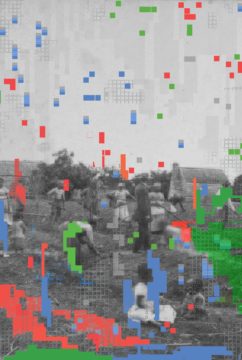Jamelle Bouie in The New York Times:
 The historian Marcus Rediker opens “The Slave Ship: A Human History” with a harrowing reconstruction of the journey, for a captive, from shore to ship:
The historian Marcus Rediker opens “The Slave Ship: A Human History” with a harrowing reconstruction of the journey, for a captive, from shore to ship:
The ship grew larger and more terrifying with every vigorous stroke of the paddles. The smells grew stronger and the sounds louder — crying and wailing from one quarter and low, plaintive singing from another; the anarchic noise of children given an underbeat by hands drumming on wood; the odd comprehensible word or two wafting through: someone asking for menney, water, another laying a curse, appealing to myabecca, spirits.
An estimated 12.5 million people endured some version of this journey, captured and shipped mainly from the western coast of Africa to the Western Hemisphere during the four centuries of the trans-Atlantic slave trade. Of that number, about 10.7 million survived to reach the shores of the so-called New World.
It is thanks to decades of painstaking, difficult work that we know a great deal about the scale of human trafficking across the Atlantic Ocean and about the people aboard each ship. Much of that research is available to the public in the form of the SlaveVoyages database. A detailed repository of information on individual ships, individual voyages and even individual people, it is a groundbreaking tool for scholars of slavery, the slave trade and the Atlantic world. And it continues to grow.
More here. (Note: At least one post throughout the month of February will be devoted to Black History Month. The theme for 2022 is Black Health and Wellness)
